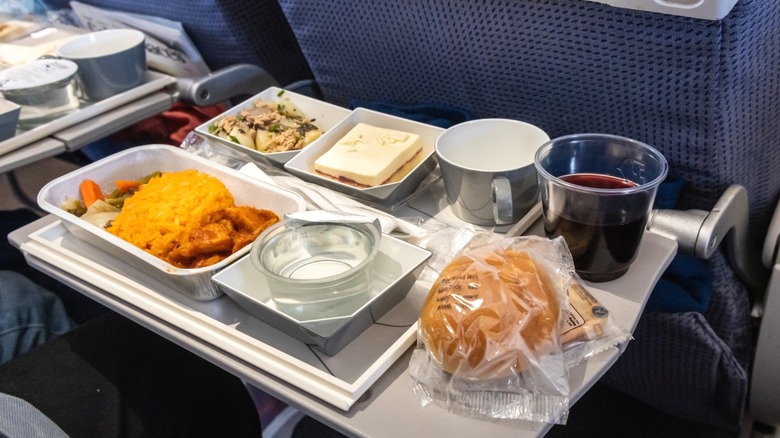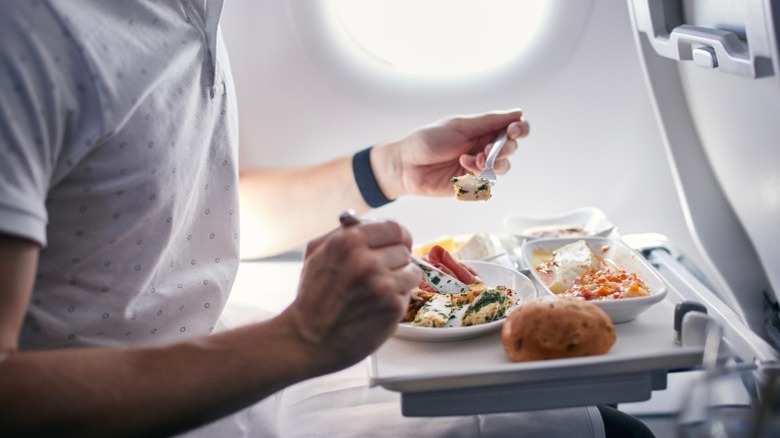How Staff Prepare Your In-Flight Meals
What's the deal with airline food? You've probably heard that line before as a call-back to comedians from the 1990s, but it is actually a question worth asking. Most contemporary airline food is nowhere near as bad as it used to be. These days, food preparation is adjusted for the way pressurized cabins mess with your taste buds. In other words, they're a lot more flavorful. It's worth knowing how the sausage (or the small portion of chicken francaise) is made, though. Namely, it's prepared before going on the plane and reheated in convection ovens by flight attendants.
It probably doesn't surprise you that the food gets made ahead of time (most of the time, anyway, since fancier airplanes have kitchens onboard). Airplanes only have so much room, after all. If there was a fully functional kitchen on the plane you'd probably be able to tell from the swearing and clanging of pots and pans. (Nowadays, you only get that if your in-flight entertainment has episodes of "The Bear.")
The food is prepared in kitchens near the airport, where it's par cooked and chilled in order to be safely stored and transported onto the airplane. Once the flight attendants are ready to start heating up the food, they place them in special-made convection ovens suited for working in high altitudes. Then, it's placed on your tray, where you're free to peel open those weird little cups of water, break out your plastic cutlery, and dig in.
Airline caterers adjust for your taste buds
Maybe you've seen those pictures of airplane passengers in the 1950s enjoying sumptuous-looking meals, the kind you might get from a particularly nice earthbound restaurant. But not only was that back in the days when air travel was a luxury, it also probably didn't taste as good as it looked. Simply put, it took a bit for us to realize the effect pressurization has on our sense of taste. While pressurizing the cabin is great for keeping us from suffocating in our seats, it has the side effect of numbing our taste buds, meaning certain foods will seem much blander than they otherwise might. (The exceptions are bitter, sour, and umami, which is why tomato juice hits different on an airplane.)
Luckily, we've adjusted for that now. Most airline food is prepared with extra sodium, sugar, or spices; depending on how salty, sweet, or flavorful the caterers want a given dish to be. They're careful not to make it too salty, though, as that can dehydrate passengers and result in discomfort. It's quite a delicate balance. If you've found yourself dissatisfied with the quality of the food on an airplane, take comfort in the fact it could have been worse. But if you want to follow Gordon Ramsay's advice and not bother with airline food, we're not going to stop you — maybe try a little airplane booze to take the edge off.

